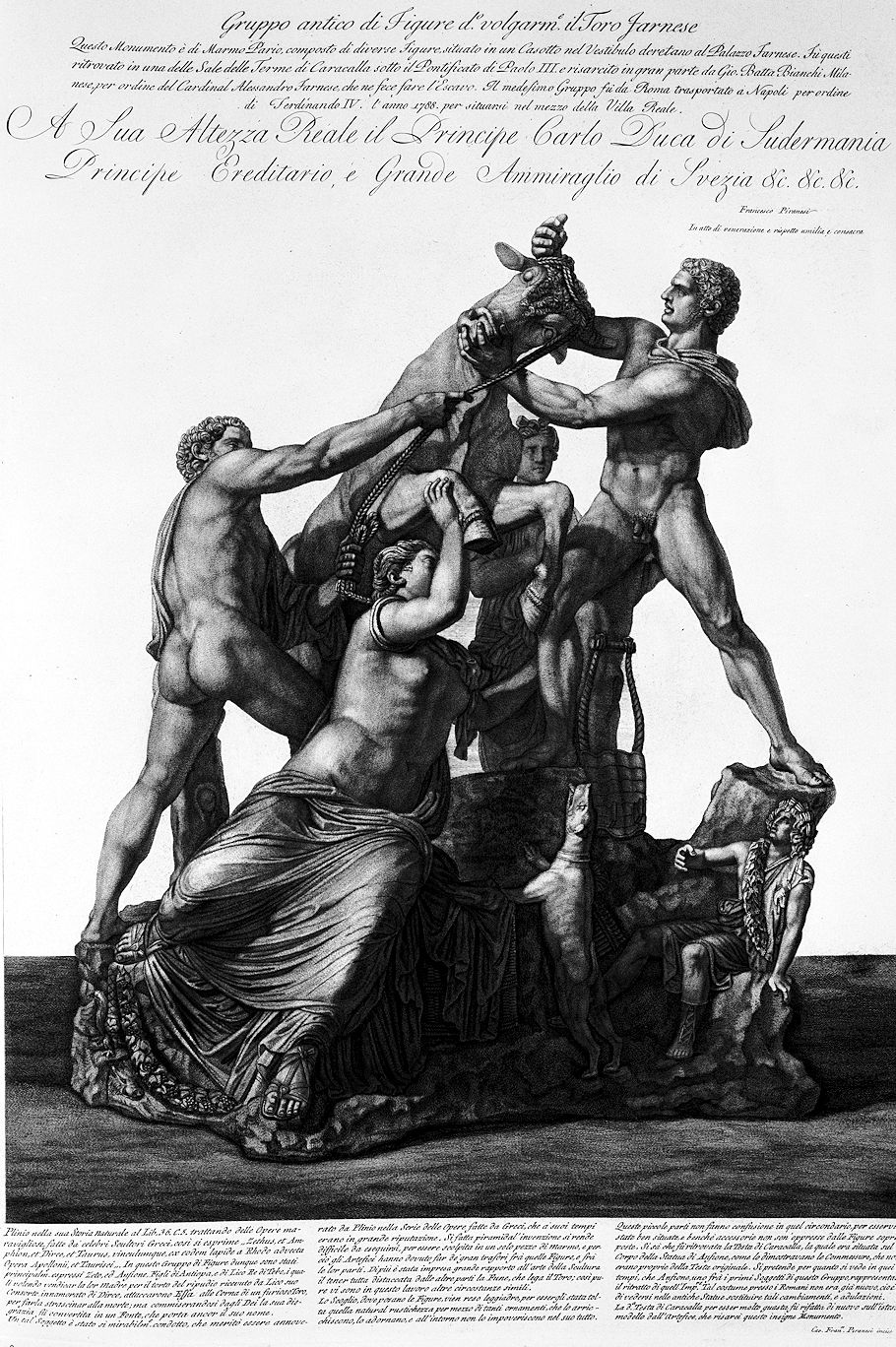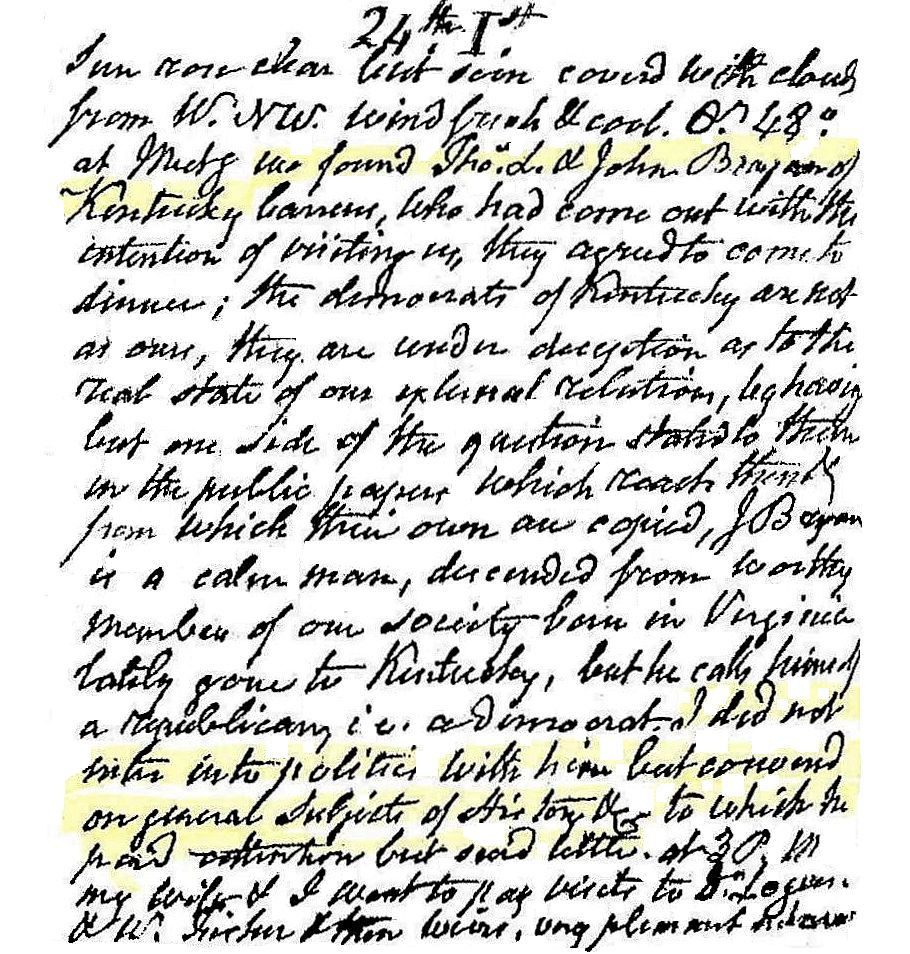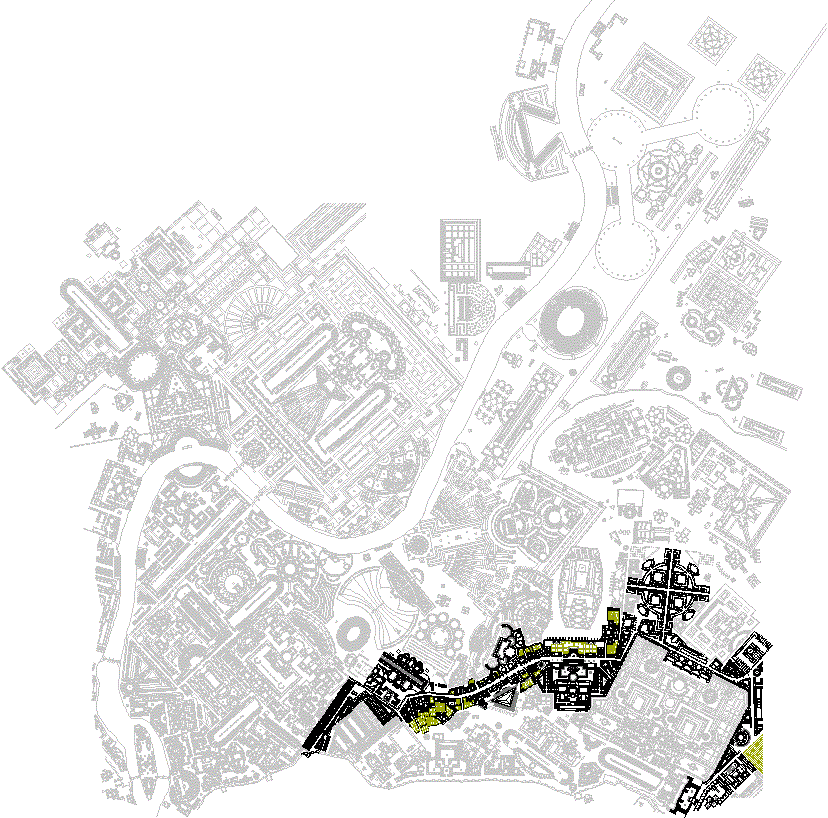24 May 1778 Sunday
On 18 December 2022 I wrote:
18 December 1777
 Piranesi begins to figure out the true plan configuration of the Circus of Caracalla, as well as the reason for the asymmetrical plan configuration.
Piranesi begins to figure out the true plan configuration of the Circus of Caracalla, as well as the reason for the asymmetrical plan configuration.
and
18 December 2022 Sunday
Was it Giovanni Battista Piranesi himself, in 1777, the first to "take a scientific approach?"
I don't think Piranesi was the first to take a scientific approach as much as the geometry of the (so-called) Circus of Caracalla forced the approach upon him. In any case, it's right around now that Piranesi is confident his discovery is correct, and it's time 'engrave' all the findings.
21-34 y.o. Francesco Piranesi
Collezione delle piu belle statue di Roma

Ancient group of figures of the vernacular and the French bull
This monument is in Parian marble, made up of various figures, located in a hut in the back vestibule of the Palazzo Farnese. It was these found in one of the halls of the Baths of Caracalla under the pontificate of Paul III. and compensated in large part by Gio. Batta Bianchi Milanese, by order of Cardinal Alessandro Farnese, who had it made the Excavation. The same group was transported from Rome to Naples by order of Ferdinand IV. the year 1788 to be located in the middle of the Villa Reale.
To His Royal Highness Prince Charles Duke of Southermania Crown Prince, and Grand Admiral of Sweden &c.&c.&c.
Francesco Piranesi
In act of veneration, and respect humiliates and consecrates.
Pliny in his Natural History at Lib. 36.C.5 dealing with the Marvelous Works, made by famous Greek Sculptors, expresses himself thus ''?ethus, et Amphion, et Divce, et Taurus, vinculumque, ex eodem lapide a Rhodo advecta Opera Apollonii, et Taurisci.'' In this Group of Figures therefore mainly represented by Zeto and Amphion, sons of Antiopa and Lycus, King of Thebes, who, wishing to avenge their mother for the repudiation received from Lycus, his consort, in love with Dirce, attacked her to the Horns of a furious Bull, to drag her to death; but commiserating with the Gods his misfortune was converted into a Fountain, which still bears his name.
Such a Subject was so admirably conducted that it deserved to be included by Pliny in the Series of Works made by the Greeks, which in his time were in great reputation. Such a pyramid made by invention makes it difficult to execute due to being sculpted in a single piece of marble, and therefore the Artificers had to make large fretwork between those Figures and between their parts. Furthermore, keeping the Rope that binds the Bull completely detached from the other parts has been a great undertaking for the art of sculpture; so also there are other similar circumstances in this work.
The Rock, where the Figures rest, is rendered graceful, by having that natural rusticity removed from it by means of so many ornaments, which enrich it, adorn it, and do not impoverish it in its entirety around it.
These small parts do not cause confusion in that surrounding area, due to having been well situated there, and although they are accessory, they are not overwhelmed by the Figures placed above. It is known that the Head of Caracalla was found, which was located on the Body of the Statue of Amphion, as demonstrated by the Commissures, which were not typical of the original Head. As far as we can see in those times, it is claimed that Amphion, one of the first Subjects of this Group, represented the portrait of that Emperor. This costume among the Romans was not already new, that is, to see these changes replaced in the ancient Statues and flattery. The d.a Testa di Caracalla, for being very similar, was rebuilt again on the same model by the Artificer, who will restore this famous Monument.
Cav. Francesco Piranesi engraved [not dated]
24 May 1812 Sunday

Sun rose clear but soon covered with clouds from WNW, wind fresh and cool, temperature 48°. At Meeting we found Tho. L. and John Bryan[?] of Kentucky ......., who had come out with the intention of visiting us. They agreed to come to dinner. The democrats of Kentucky are not like ours, they are under deception as to the real state of our external relations, ........ but one side of the question stated to them in the public papers, which reach them and from which their own are copied. J. Bryan is a clam man, descended from worthy members of our society born in Virginia lately gone to Kentucky, but he calls himself a republican, i.e., a democrat. I did not enter into politics with him, but conversed on general subjects of history etc., to which he paid attention but said little. At 3 PM my wife and I went to pay visits to Dr. Logan and W. Fisher and then ....., very pleasant ......
24 May 2005
hotrod architecture
Christian churches have a long history, don't they? We don't really know what the Christian church across from the palace at Nicomedia that was burned during the Great Persecution under Diocletian looked like, but we do know the ritual that accompanied the rededication of the church at Tyre, which was also desecrated during the Great Persecution. And then almost immediately following we have the original "Constantinian" basilicas, first the basilica building boom in Rome late 312-326 under the supervision of Helena, then the basilica building boom in the Holy Land, also under the supervision of Helena, [and, believe it or not, the basilica building boom at Treves, today's Trier, Germany, under the supervision of Eutropia and Constantine fits right here in this [his]story too,] and ultimately the building boom of a whole new Christian capital of the Roman Empire at Constantinople under the supervision of Constantine himself.
It is these early Christian basilicas that have then been reenacted in multitudinous ways (and yes, even some hot rodded) over the subsequent centuries. My favorite most recent reenactment of a "basilica" is the Out of the Ordinary exhibition design at the Philadelphia Museum of Art 2001. It even had a hot rodded sanctuary! (At least that's where the bang specifically was.)
Last night it dawned on me that the Out of the Ordinary exhibition design also reenacted the museum floor "design" directly above it. "When in Rome," I suppose.
24 May 2014
17 May
Experimentally found that the 'axis of life' within the Ichnographia matches the Benjamin Franklin Parkway of Philadelphia; learned that Piranesi was not arbitrary in his composition of the Ichnographia, rather that he delineated a narrative of the architectural history of Rome spanning from the altar of Mars (c. 750 BC) to the sarcophagus of Empress Maria (c. 400 AD); discovered that Piranesi printed two differing versions of the Ichnographia.
24 May 2021

Streets of the Campo Marzio Via Lata Via Flaminia Via Salaria
24 May 2023 Wednesday
. . . . . .
|